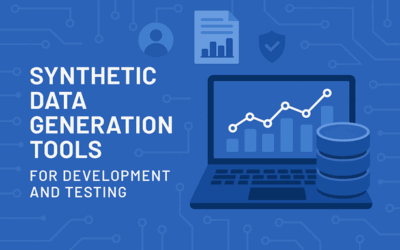A Brief History of Configuration Management.
by Justin Reynolds
In today’s microservices-and-continuous-integration driven world, where apps run in hybrid cloud environments and users engage with them on any device and on any underlying operating system, applications are increasingly complex.
Yet at the same time, they are becoming increasingly vital to the success of any organization. On one hand, that can be a SaaS provider that is responsible for software that businesses run on. On the other hand, it can be an enormous enterprise that needs to keep its systems online to ensure optimal customer experiences and avoid downtime, which can cost as much as $540,000 per hour, according to Gartner.
With so much on the line, it’s more important than ever for organizations to do everything within their power to make sure their systems are operable and available around the clock and around the world. To this end, configuration management is becoming an increasingly integral part of every serious company’s IT and engineering workflows.
What is Configuration Management?
In the world of software, configuration management refers to the process in which changes to systems and applications are overseen in such a way as to ensure they continue operating at an optimal level as new features and changes are introduced.
With the right configuration management tools in place, companies are able to quickly spin up new servers. They can respond to incidents and issues faster, and streamline server management. They do this all while maintaining several distinct environments (e.g., production, development, and testing) and having full visibility into all changes to a system. This translates into reduced costs, increased agility, and improved user experiences, among other things.
Now that we have our terminology down, let’s take a step back and look at a brief overview of the history of configuration management, how it started, and how it came to be a central tenet of the world of software development.
A Brief History of Configuration Management
In the 1950s, the United States Department of Defense created configuration management as a mechanism to oversee the complicated and powerful hardware under its control: things like tanks, weaponry, aircraft, ocean vessels, and more. This enabled them to keep track of where all of their assets were at any given moment. At the same time, they could stay on top of any changes to their arsenal over time to ensure each asset remained in optimal working condition.
As software systems became increasingly complex, the philosophy of configuration management—and an accompanying set of tools—came to the development world. As a result, developer teams are able to keep tabs on where all of their virtual assets are and keep track of every change made to each of them.
Today’s leading DevOps teams use configuration management to make sure their apps and systems work as designed and, by extension, that their users can use them as designed at all times.
The Benefits of Configuration Management
Companies are increasingly adopting configuration management tools and procedures because the benefits are truly game-changing. Let’s explore five of the most impactful benefits to give you an idea of why your team needs to consider configuration management.
1. Increased Uptime
Since software teams are able to easily monitor changes to systems, they have more visibility into the underlying infrastructure that powers their applications. More visibility means they’re able to detect any issues quickly or even prevent them from happening, which reduces the likelihood they will run into unpredicted outages.
2. Increased Agility
Even with more visibility, software is software, and something will break eventually. Thanks to configuration management, when problems do emerge, engineers can rapidly respond to them. It increases mean time to resolution (MTTR) metrics and ensures systems are brought online and properly reconfigured as quickly as possible.
3. Improved User Experiences
More uptime and improved MTTR metrics translate into systems that work for your users as designed, almost always. As a result, employees get more done and customer experiences are improved. This means that companies enjoy increased staff productivity. They are able to delight their customers, which helps them increase their revenue. Again, in the event something isn’t working properly, DevOps teams can move quickly to bring systems back online faster.
4. Increased Profitability
Configuration management gives organizations more insight into their systems. This enables them to pay attention to all the details, even the seemingly minor ones. By constantly monitoring the health of your systems, you can prevent expensive mistakes. You need to fix minor issues before they become crippling problems. Beyond that, configuration management makes it easier to prevent security breaches, along with the devastating fines and none-too-satisfied customers that can come with them. Finally, configuration management also enables you to ensure duplicative work isn’t performed. This will give you additional efficiency. Add it all up, and configuration management increases profitability substantially.
5. Improved Scalability
Modern applications need to be able to scale to accommodate periods of high traffic. Configuration management can help here because it enables teams to know, with certainty, that their systems are operating on an optimal level. Thanks to automation, teams can scale up quickly by provisioning new servers that are properly configured in just a few minutes.
These are just some of the myriad of benefits configuration management brings to software development teams. Now, let’s briefly shift our attention to some of the challenges that come with it.
The Challenges of Configuration Management
Since modern software and systems are complex, configuration management can be a tricky undertaking to get off the ground. It’s not as simple as deciding to give configuration management a try and getting great results the next day.
As you begin the process of implementing configuration management at your organization, here are some challenges to keep in mind:
- Maintaining consistency across several teams and several environments (e.g., testing, production, and staging) can be tricky.
- The more complicated your apps are, the harder it will be to manage and oversee them. This is true even if you have 100% visibility into them.
- Working with several different vendors across different geographies and time zones makes managing your systems that much more difficult.
- It’s much harder to enact configuration management at organizations that don’t follow agile and DevOps principles.
- People matter, too. You need a team of developers who are open to adopting new workflows to implement configuration management at your company.
- Automation can help expedite configuration management considerably. But in order for your organization to enjoy the maximum upside, automation needs to be fit for purpose.
Luckily, with the right approach to configuration management and the proper tools in place, these problems can be avoided.
Are You Ready to Get Started With Configuration Management?
In an increasingly competitive business world, companies can’t afford to rely on software that isn’t properly configured. The best-case scenario means applications run slower, resulting in suboptimal user experiences, decreased productivity, and dissatisfied customers. The worst case scenario means software won’t work at all, and business will grind to a halt.
Companies can’t afford to encounter either of these scenarios. The good news is that by investing in configuration management solutions, they won’t have to.
For example, enterprise release management tools enable DevOps teams to streamline deployments while gaining more visibility into their pipelines. Similarly, test environment management tools give software companies the transparency, efficiency, and scale needed to ensure proper software configuration while reducing IT overspend.
Take a look at Enov8 to learn more about how your organization can integrate configuration management into your DevOps workflows to reduce IT expenses while streamlining and optimizing the software release lifecycle and ensuring your users and employees are productive and happy.
Learn More or Share Ideas About Configuration Management
If you’d like to learn more about Data, Release or Environment Management or perhaps just share your own ideas then feel free to contact the enov8 team. Enov8 provides a complete platform for addressing organisations “DevOps at Scale” requirements. Providing advanced “out of the box” Holistic Test Data Management, IT & Test Environment Management & Release Management capabilities.
Innovate with Enov8, the IT Environment & Data Company.
Specializing in the Governance, Operation & Orchestration of your IT systems and data.
Delivering outcomes like
- Improved visibility of your IT Fabric,
- Streamlined Delivery of IT Projects,
- Operational Standardization,
- Security & Availability,
- DevOps / DataOps Automation,
- Real-Time insights supporting decision making & continuous optimization
This post was written by Justin Reynolds. Justin is a freelance writer who enjoys telling stories about how technology, science, and creativity can help workers be more productive. In his spare time, he likes seeing or playing live music, hiking, and traveling.
Relevant Articles
7 Synthetic Data Generation Tools for Dev & Testing
In software development and testing, having access to high-quality, realistic data is crucial. But real production data is often sensitive, regulated, or simply unavailable for testing purposes. Synthetic data generation tools provide a powerful alternative, enabling...
The SAFe Hierarchy and Levels, Explained in Depth
The Scaled Agile Framework (SAFe) is a comprehensive set of principles and practices designed to help organizations adopt agile methods on an enterprise level. It provides a set of guidelines and best practices that enable large-scale product development with agility....
DORA Compliance – Why Data Resilience is the New Digital Battlefield
How Enov8 Helps Financial Institutions Align with the EU's Digital Operational Resilience Act Executive Introduction As of January 2025, the EU's Digital Operational Resilience Act (DORA) has become legally binding for financial institutions operating across the...
Data Fabric vs Data Mesh: Understanding the Differences
When evaluating modern data architecture strategies, two terms often come up: data fabric and data mesh. Both promise to help enterprises manage complex data environments more effectively, but they approach the problem in fundamentally different ways. So what’s...
What Is Release Management in ITIL? Guide and Best Practices
Managing enterprise software production at scale is no easy task. This is especially true in today’s complex and distributed environment where teams are spread out across multiple geographical areas. To maintain control over so many moving parts, IT leaders need to...
Test Environment: What It Is and Why You Need It
Software development is a complex process that requires meticulous attention to detail to ensure that the final product is reliable and of high quality. One of the most critical aspects of this process is testing, and having a dedicated test environment is essential...










